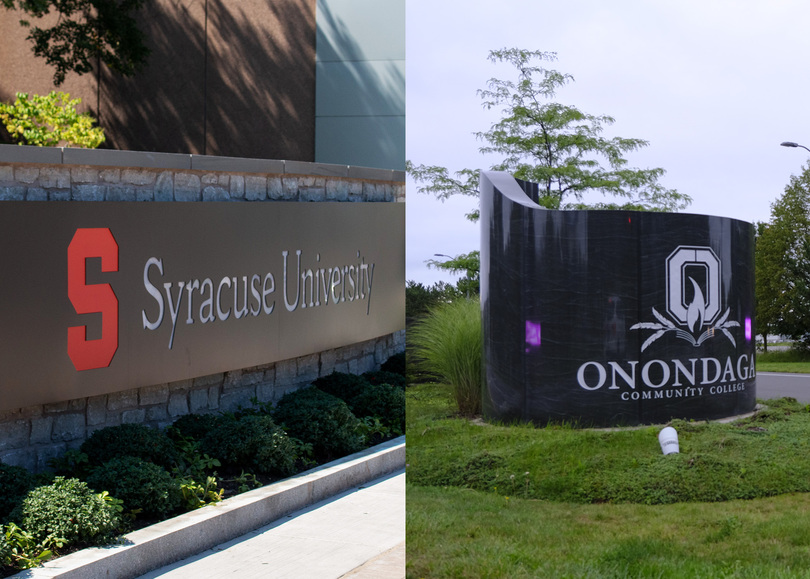SU announces new direct transfer agreement for Onondaga Community College graduates

The Direct Transfer Admission Program Agreement allows graduates from Onondaga Community College to earn a bachelor's degree in select Syracuse University programs in four semesters. Daily Orange File Photo
Get the latest Syracuse news delivered right to your inbox.
Subscribe to our newsletter here.
After years of planning spurred by the pending arrival of Micron Technology in central New York, Onondaga Community College and Syracuse University announced in August a Direct Transfer Admission Program Agreement to provide eligible OCC students with a pathway to enroll in several SU colleges.
The agreement between both institutions would allow OCC graduates to register for a bachelor’s degree at SU’s College of Arts and Sciences, College of Engineering and Computer Science, School of Information Studies and College of Professional Studies.
“It’s just an exciting opportunity for students who begin their academic careers with us here at the community college to be able to become part of the student body and alumni of Syracuse University,” said Anastasia Urtz, provost and senior vice president at OCC.
Enrolled OCC students who transfer to SU will be able to earn a bachelor’s degree in four semesters. Eligible graduates from OCC must have earned a minimum GPA of 3.0, and SU will award merit-based scholarships of at least $10,000 for students with a 3.25 GPA or higher.
OCC and SU have been planning for the program’s launch since 2019, but the pandemic threw a wrench in its progress, Urtz said.
Prior to the pandemic, Urtz said both institutions reviewed their curriculums to find connections between OCC and SU. Instructors from related departments in each institution worked to ensure that a student who takes courses at OCC will have learned the prerequisite material necessary for continuing to take higher-level courses in the same field at SU, Urtz said.
“One of the things that certainly I’m excited about is to have that faculty-to-faculty ongoing collaboration around curriculum alignment,” said Gretchen Ritter, SU’s vice chancellor, provost and chief academic officer.
The program creates specific pathways, or lists of courses to take that align with past credits from OCC, that allow students to earn degrees from their desired school or college at SU. While the partnership is in effect between SU and OCC now, current OCC students will likely start studying at SU through the program within one to two years, Ritter and Lois Agnew, associate provost for academic programs and professor of writing and rhetoric, said. The pathways will help students know exactly how their credits have been transferred and what courses they have left to take.
SU and OCC are also working toward building more pathways for OCC students interested in other fields of study to ensure all students’ interests and needs are met, Ritter said. The two schools are currently working on a pathway for students to study in the Martin J. Whitman School of Management, which requires only one year of study at OCC before students can transfer into the school.
The new partnership between the two schools will bolster SU’s connection with Micron, who announced a $100 billion investment into the Syracuse area in October 2022. SU and 20 other higher education institutions also formed the Northeast University Semiconductor Network on April 20 to encourage workforce growth for Micron.
Part of the agreement is specifically targeted to prepare students for jobs at Micron if they wish to follow that path, but none of the skills taught at either institution will be so specific to Micron that they will limit students from finding jobs elsewhere, Urtz said.
Agnew said interested OCC students will work with Scott Taylor, SU’s director of transfer and veteran admissions, who she said visits OCC regularly to talk with interested students.
“One of the benefits of this agreement from our standpoint has been that it’s allowed us to create a more collaborative approach to working with transfer students and specifically OCC students,” Agnew said. “Now, we have a network of people who are working together to make sure that… we are providing students with all the support that we can.”





